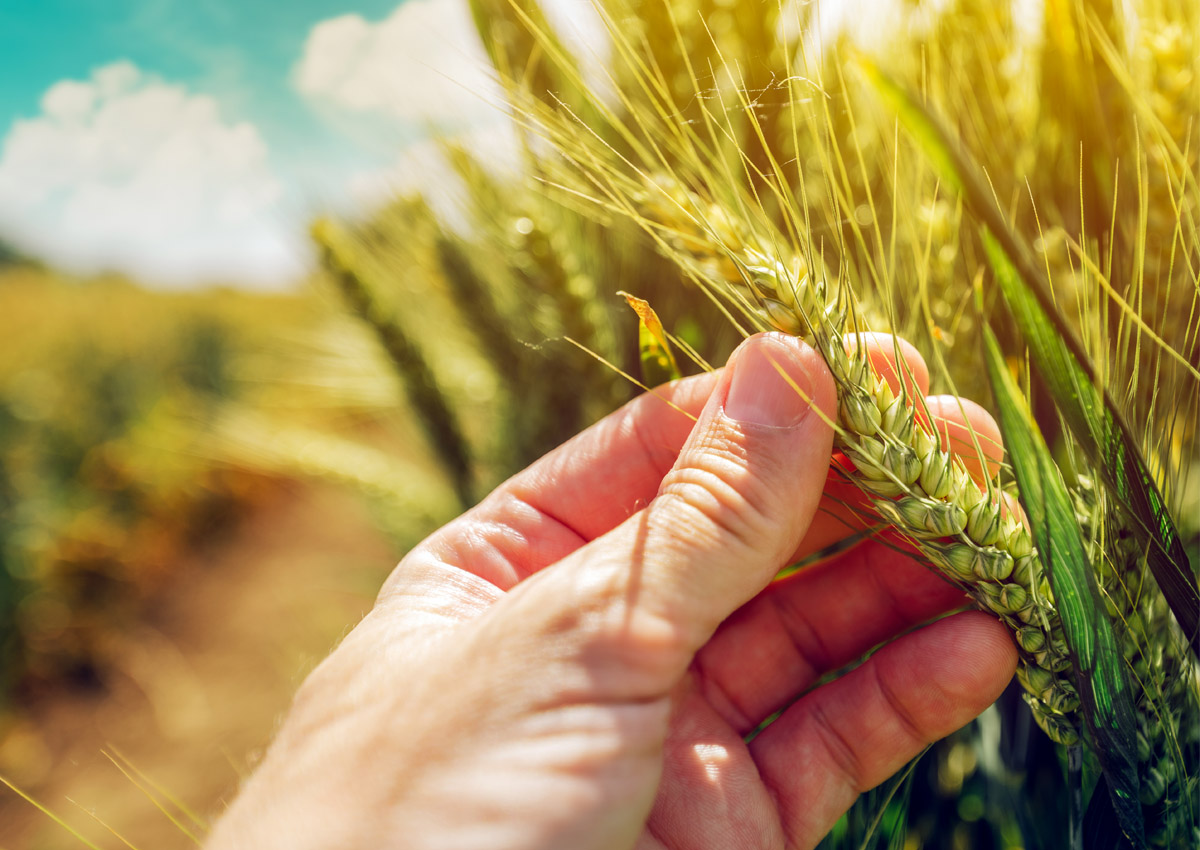
Scientists Solve 20-Year Old Wheat Genetics Puzzle
May 20, 2020| |
University of California Riverside scientists have solved a 20-year-old genetics puzzle that could help protect wheat, barley, and other crops from the devastating infection of Brome Mosaic virus. This virus primarily affects grasses such as wheat and barley, and occasionally affects soybeans as well.
According to Ayala Rao, professor of plant pathology and microbiology, who has been studying Brome Mosaic virus for decades, the genetic material of Brome Mosaic virus is divided into three particles that until now were impossible to tell apart. Inside each of the particles is a strand of RNA, the genetic material that controls the production of proteins. The proteins perform different tasks, some of which cause stunted growth, lesions, and ultimately the death of infected host plants.
Through a genetic engineering technique, the research team led by Rao disabled the pathogenic aspects of the virus and infused the viral genes with a host plant. They were able to isolate the viral particles in the plants and determine their structure. With one of the particles is fully mapped, it became clear that the first two particles are more stable than the third.
"Once we alter the stability, we can manipulate how RNA gets released into the plants," Rao said. "We can make the third particle more stable, so it doesn't release RNA and the infection gets delayed."
For more details, read the article in UC Riverside News.
| |
You might also like:
- Australian Scientists Develop New Method to Produce Drought-Resilient Wheat Quickly, Cheaply, and Accurately
- Rain-resistant Wheat Developed Using Genome Editing
- Study Shows Drought Tolerant HB4 Wheat Compositionally Equivalent to Non-GM Wheat
Biotech Updates is a weekly newsletter of ISAAA, a not-for-profit organization. It is distributed for free to over 22,000 subscribers worldwide to inform them about the key developments in biosciences, especially in biotechnology. Your support will help us in our mission to feed the world with knowledge. You can help by donating as little as $10.
-
See more articles:
-
News from Around the World
- ISAAA Monitors Progress of Research on COVID-19
- Kenyan Researchers Seek Approval to Introduce Disease-Resistant Cassava
- ARS Scientists Identify Genes Associated with Postharvest Deterioration of Fresh-Cut Lettuce
- USDA Finalizes SECURE, Eases Up Biotech Regulations
- Scientists Solve 20-Year Old Wheat Genetics Puzzle
- South Australia Moves Closer to Planting GM Crops
- EFSA Releases Scientific Opinion on Oilseed Rape MS11
-
Research Highlights
- Plant Viruses Found to Potentially Treat Diabetes, Arthritis
-
Plant
- CRISPR-Cas12b/C2c1 Tested in Targeted Mutagenesis of a Dicot
-
Health
- Medicago Announces Positive Results of Trials for its COVID-19 Vaccine Candidate
-
Read the latest: - Biotech Updates (November 12, 2025)
- Gene Editing Supplement (October 29, 2025)
- Gene Drive Supplement (February 22, 2023)
-
Subscribe to BU: - Share
- Tweet

